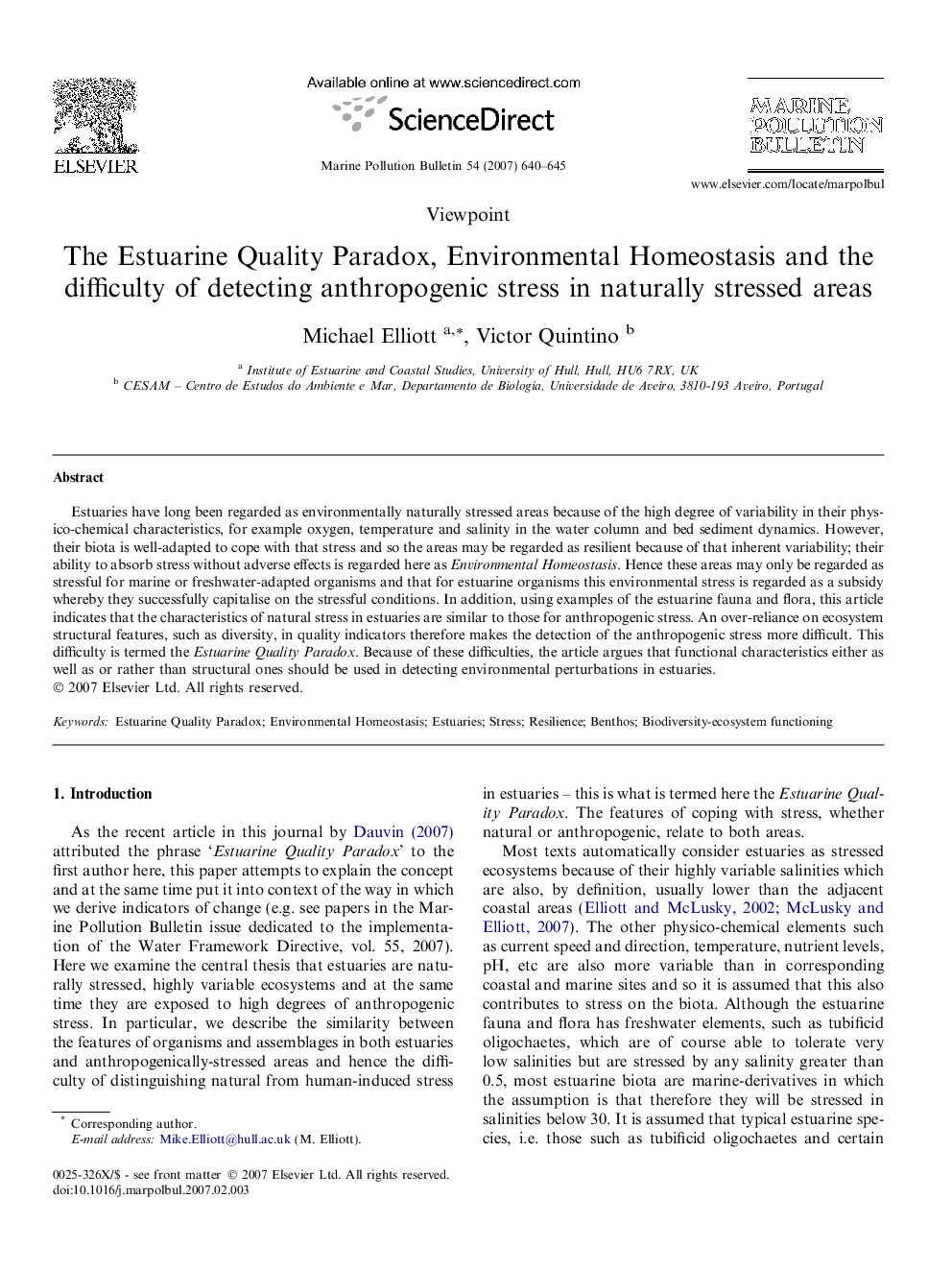| Article ID | Journal | Published Year | Pages | File Type |
|---|---|---|---|---|
| 4477675 | Marine Pollution Bulletin | 2007 | 6 Pages |
Estuaries have long been regarded as environmentally naturally stressed areas because of the high degree of variability in their physico-chemical characteristics, for example oxygen, temperature and salinity in the water column and bed sediment dynamics. However, their biota is well-adapted to cope with that stress and so the areas may be regarded as resilient because of that inherent variability; their ability to absorb stress without adverse effects is regarded here as Environmental Homeostasis. Hence these areas may only be regarded as stressful for marine or freshwater-adapted organisms and that for estuarine organisms this environmental stress is regarded as a subsidy whereby they successfully capitalise on the stressful conditions. In addition, using examples of the estuarine fauna and flora, this article indicates that the characteristics of natural stress in estuaries are similar to those for anthropogenic stress. An over-reliance on ecosystem structural features, such as diversity, in quality indicators therefore makes the detection of the anthropogenic stress more difficult. This difficulty is termed the Estuarine Quality Paradox. Because of these difficulties, the article argues that functional characteristics either as well as or rather than structural ones should be used in detecting environmental perturbations in estuaries.
